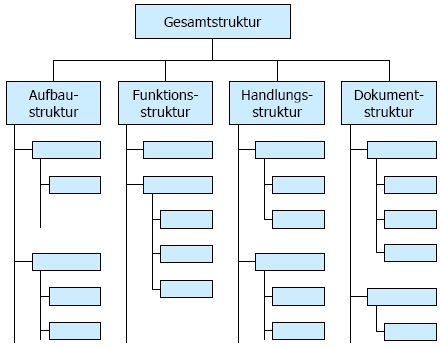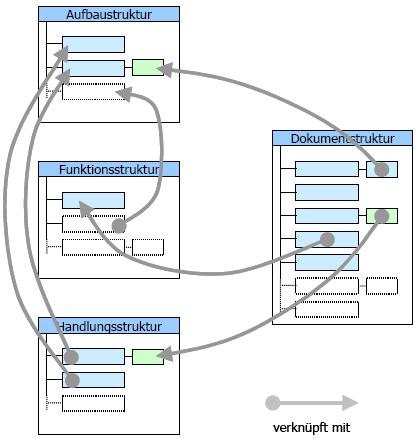Mumasy
Mumasy (multimedia machine information system) is a manufacturer-independent information model for mechanical engineering. It is used to exchange data between suppliers, manufacturers and customers or the different phases of the product life cycle. It was created as a joint project of German mechanical and plant engineering.
Philosophy of mumasy
The aim is to collect all kinds of information about a machine over the entire product life cycle and to make this available to information users for their own individual purpose. Information users view a machine from different perspectives. Depending on how the conveyed information is conceptually implemented, perspectives arise. If the implementation of the information leads to action, one speaks of an action-oriented perspective. If the implementation of the information leads to an understanding of a functional process, one speaks of the functional perspective. If the information describes the geometric structure of a machine, one speaks of the structural perspective. In addition, the information can be viewed from the document view (e.g. operating instructions). The Mumasy information model represents structures for each of the four perspectives and enables a comprehensive representation of the machine for the user.
- The structure represents information on components of the machine.
- The functional structure represents the functional product structure of a machine.
- The action structure represents actions and measures in handling a machine.
- The document structure represents the content and composition of the technical documentation.
The Mumasy information model connects these structures. Because functions are usually only possible if components produce an effect in a defined manner or if actions and measures are carried out. To convey information, technical documentation is required that describes the structure, explains the functions and calls for measures and actions.
The Mumasy information model is the systematic basis for this purpose. Information processes must be developed on this basis. Tools such as editorial systems provide technical support for the processes. This enables company-wide information management.
See also
swell
- Description of a schema for technical documentation in mechanical engineering (mumasy) , technical rule VDMA 66320: 2006-09, issue date: 2006-09, Beuth Verlag, Berlin
- ( Page no longer available , search in web archives: Fraunhofer Institute for Systems and Innovation Research ISI )
- ( Page no longer available , search in web archives: mumasy - multimedia machine and system information system (PDF) )
- Is it still alive or does it just smell a bit pungent? , February 16, 2010

